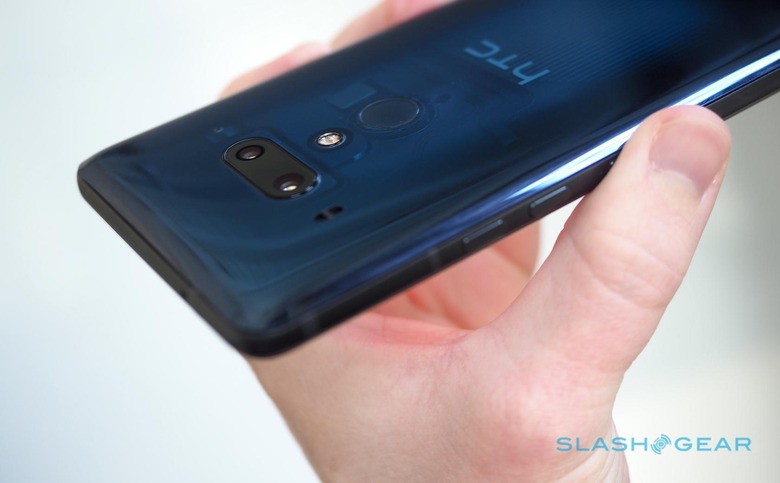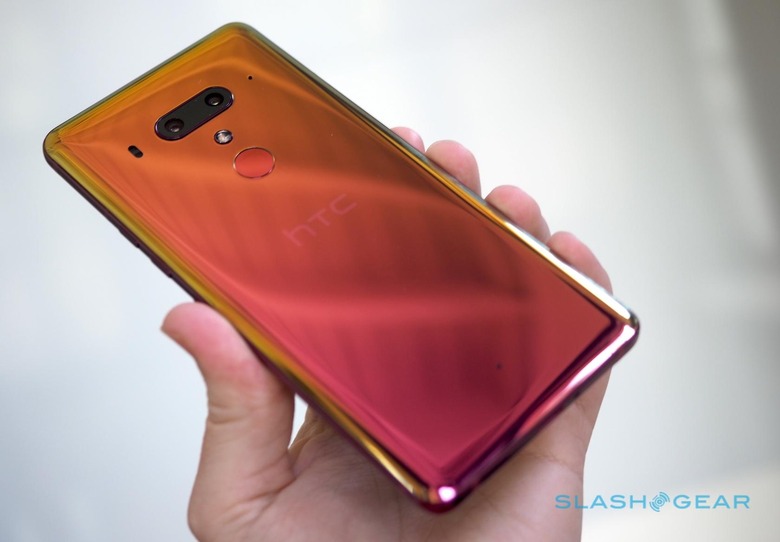The HTC U12+ Doubles-Down On Squeezing, For Better Or Worse
It's not only the notchless display that sets the new HTC U12+ apart from its Android rivals this year, with the phone-maker doubling down on its pressure-sensing sides. Dubbed Edge Sense 2, it's an upgraded and expanded control system that takes into account not only how you're squeezing the phone, but how you're holding it too.
Back when HTC debuted Edge Sense on the U11 last year, it recognized two things: a squeeze, and a long squeeze. Each could be mapped to different apps or functions. You could have a short squeeze trigger Amazon Alexa, for example, while a long squeeze might turn on the phone's flashlight.
Edge Sense 2 extends the sensors further along the sides of the phone, and adds a new gesture: double-tap. Tap the side of the U12+ twice, as though you're double-clicking, and that can be mapped to a third app or function. Out of the box, HTC uses it to trigger the one-handed interface, shrinking the UI down so that it's easier to reach across with your thumb while holding the U12+ in the same hand.

HTC is actually using Edge Sense 2 in more subtle ways, however, too. That one-handed mode doesn't just track your double-tap, for example; it also looks at how you're holding the U12+ in general, and figures out from that which hand it's in. That way, it can offset the shrunken UI to the right side automatically.
It can also use that grip information to decide which way you might want the screen rotation to act, even if that's different to what the U12+'s accelerometer is suggesting. If you've ever tried to use your phone while lying down in bed, but found the display keeps auto-rotating, you'll be pleased to hear that HTC's new flagship can tell you probably want the screen orientation to lock.
HTC even uses Edge Sense 2 for what look at first glance like hardware buttons. Although the volume and power keys protrude like physical switches, they don't actually move at all. Instead, the same pressure sensors are used to track your use of them.

It's clever, though there's a good reason why real buttons are still commonplace. If the U12+'s keys are going to be accepted, they'll need to work just as consistently as physical keys would. That means no lag between squeezing the button and it acting on the volume, or unlocking the display, and no missed presses if Android is otherwise busy.
I'm also not entirely convinced by HTC's haptic system, at least not in the short time I had to try the U12+ out. The idea is that the phone's vibration motor gives a brief buzz when you press one of the buttons, giving your fingers the impression that they moved. In reality, I'm not quite sure HTC aced that sensation.
Haptic feedback can be surprisingly convincing. Apple's latest Force Touch trackpad technology, for example, may not physically move when you press it, but the feeling of it clicking is astonishingly lifelike. In comparison, the short vibration that the U12+ gave in my hands felt less localized: it was clear that the phone in general was moving, rather than the button itself giving a reassuring click.

It's possible that HTC could tune that with software, and indeed that, over time, my fingers would get used to the feeling and stop seeing it as so incongruous. Similarly, the advantages to this system could be significant. Not only does it make IP68 water- and dust-proofing the U12+ easier, but it means that in time HTC could upgrade the volume and power keys to support different pressures of touch, too. That opens the door to much more flexible shortcut keys.
Even if you don't pick up an HTC U12+ and try Edge Sense 2 on that, there's a good chance you might encounter the technology later in the year anyway. As we saw in 2017, technology from the U11 like the pressure-sensitive sides went on to feature in the Pixel 2, made for Google by HTC. It seems likely that the Pixel 3, expected to arrive later in 2018, will continue that borrowing trend.
